Article written by Quantiz partner Tiago Martin

Summary
In this material, you will quickly and directly find concepts to identify the characteristics and main expected benefits of a well-structured commercial policy. Additionally, you will also receive suggestions on how to design or revise your company’s commercial policy, as well as tips and recommendations.
Does your company have a Commercial Policy (or Pricing Policy)?
In recent years, we have observed that the pricing topic is being increasingly treated with importance by companies in Brazil. Specific areas are being created to deal with the topic, a consequence of the increasing importance and strategy for sustainable growth and profitability of companies.
But before moving forward, it is necessary to know why (or “if”) your company needs a Commercial Policy and what benefits it will bring.
Think about the questions below regarding the prices of your company’s products or services:
- Do you have a pricing logic by segment, channel or region?
- Are discounts used following any objective logic structured by the company or does it depend on each negotiation?
- Do similar clients (region, same profile and behavior) have similar prices?
- Are price dispersions easily explained by any criterion that makes sense for your business (e.g. volume, mix, etc)?
- Do your clients know which rules they must follow to get better commercial conditions?
- Is it possible to logically explain why the price of one client is different from another?
If you answered “no” to one or more questions, there may be opportunities to create or improve your company’s Commercial Policy. In other words, your company may be leaving a lot of money on the table by not taking advantage of these opportunities.
Why do you need a well-structured Commercial Policy?
In general, the consequences of the lack of a commercial policy are noticed in the medium and long term.
Here are some common examples of what may happen over time due to a lack of a well-structured Commercial Policy:
- Customers start to question why their competitors have lower prices for the same product or service;
- Small retailers with similar or better conditions than large retailers (price conflict);
- Strong pressure to give more and more discounts, reducing the company’s margin and making it more difficult to negotiate with customers;
- Lack of transparency in prices and conditions, encouraging increasingly opportunistic and less loyal behavior from customers.
The Commercial Policy is designed to minimize these types of problems and provide more security and argumentative power for the entire sales team. In summary, ideally, the Commercial Policy should:
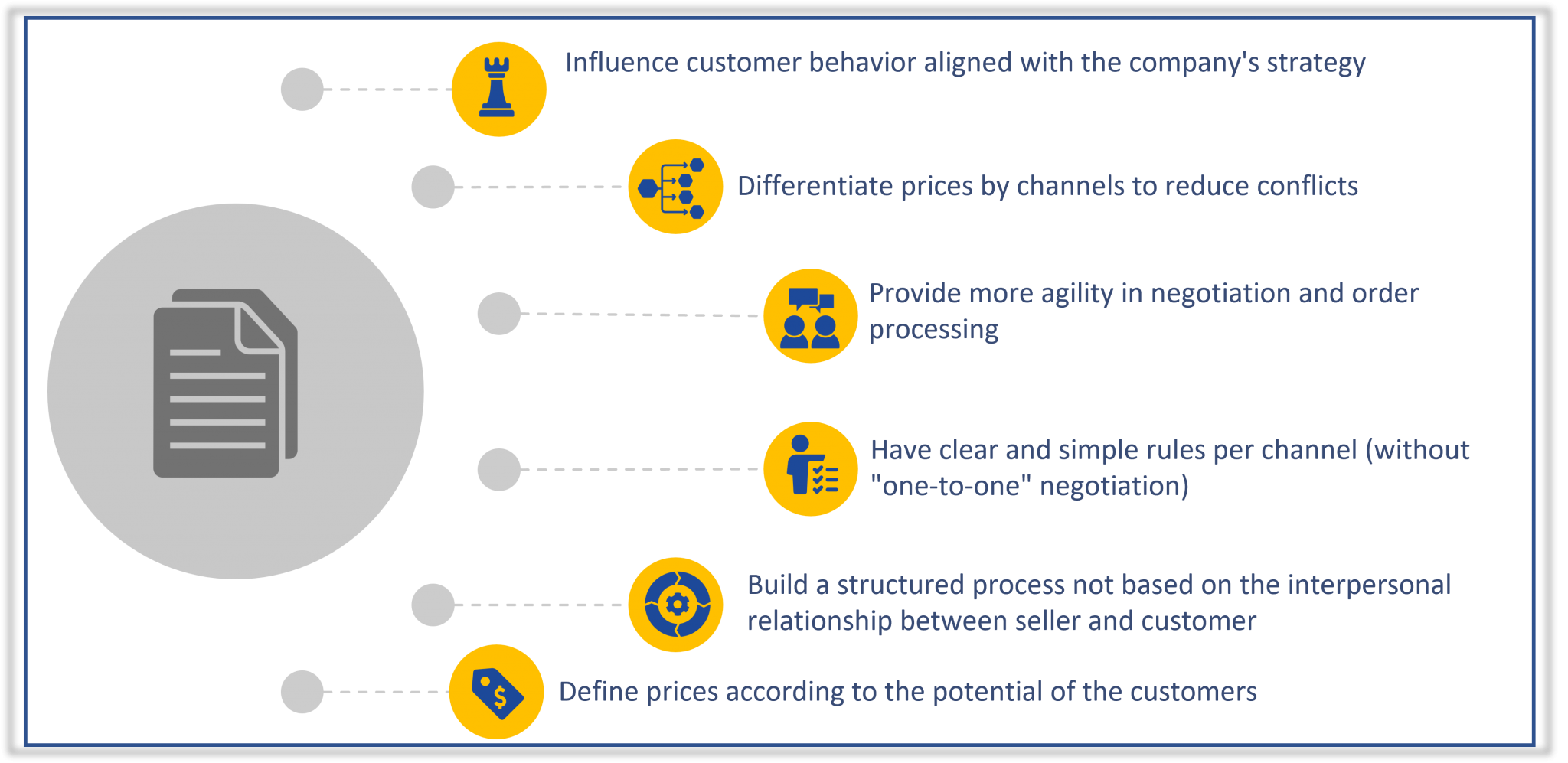
In addition, the longer your company goes without a structured policy, the more difficult it will be to manage the change. Changing historical behaviors, such as “we’ve always done it this way and it has worked until now,” despite seeming simple, is a huge challenge. These are people who are used to having a lot of “freedom” to negotiate and act as they see fit. Transforming these people so that everyone follows the same guidelines requires a lot of effort.
What benefits will a Commercial Policy bring to your company?
With a well-structured commercial policy, important changes will be noticed over time, both by customers and the sales team.
Price positioning
It will enable the design of an appropriate price positioning by region, channel, and segment. Thus, price lists will be closer to the reality of each customer, without the need for a large volume of discounts in negotiation. In addition, the establishment of price limits (minimum price) will ensure that there are no prices with lower profitability than expected if there is no superior approval for this.
In the example below, which shows the dispersion of prices of the same product by sales segment in the same region, the difference in sales prices in a scenario without a well-structured commercial policy and another scenario with a more mature commercial policy is noticeable.
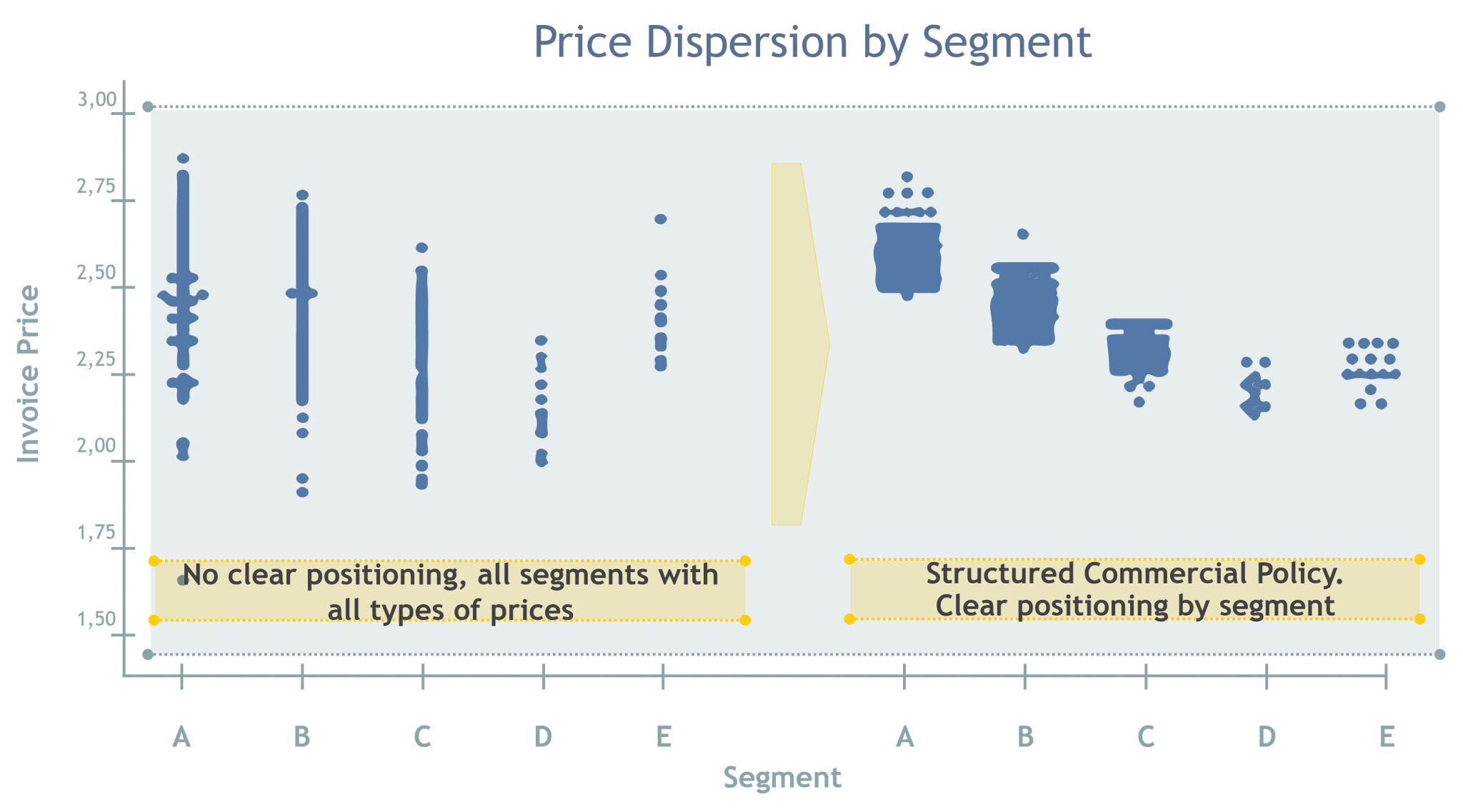
It is important to keep in mind that the price positioning can vary by channel/segment, region, product group, etc. In the example below, it is possible to notice, in a simplified way, possible discounts to position the starting price of each channel of a specific family of products in a certain region.
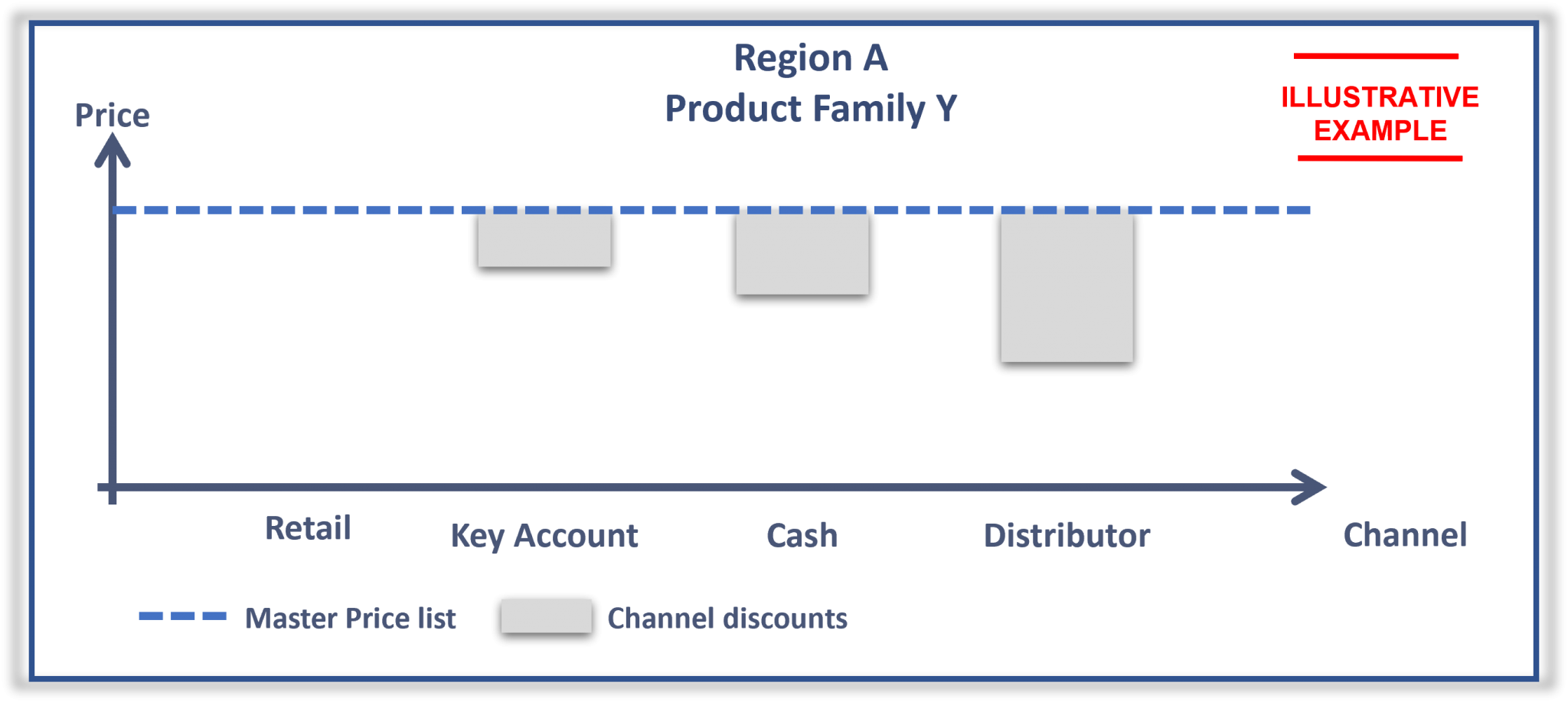
Clear guidelines
Without clear guidelines or strategy, the tendency is for different tactics to be created within the sales team, according to what each salesperson/coordinator/manager believes to be the best.

The Commercial Policy should be closely aligned with the corporate strategy, such as increasing margin, increasing market share, selling a larger portfolio of products, eliminating low-margin orders, among other factors.

The “win-win” relationship with customers
Once there is a clear rule, over time, the tendency is to reduce pressure in negotiations and meet goals and objectives (such as volume, mix, frequency, etc.) to obtain the discount. The point of attention is that, for this to happen, it is essential to have credibility in the policy. That is, if customers perceive that they do not need to fulfill a counterpart and still get discounts by pressuring the seller, the policy will completely lose its effect.
In the figure below, we can see how the discount could vary with the volume of purchases.
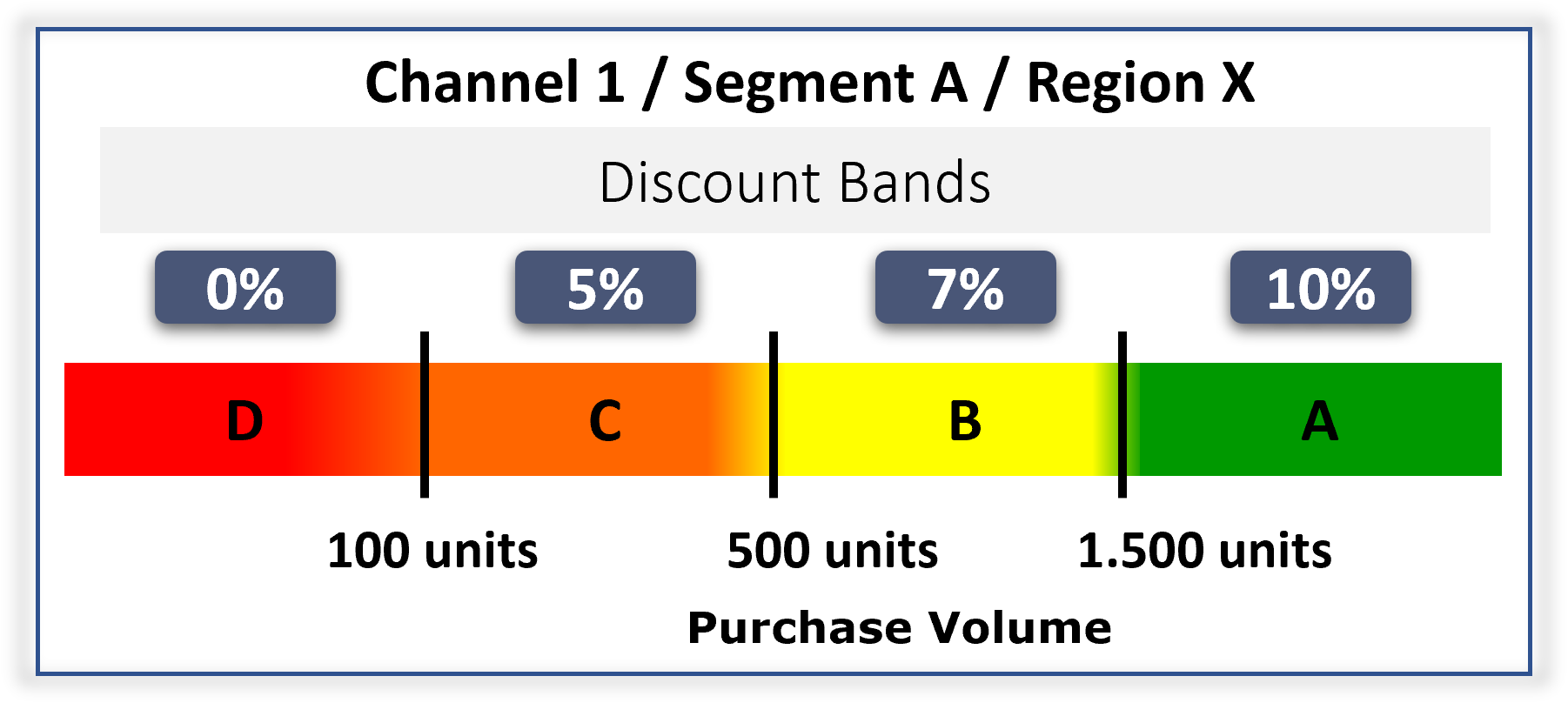
In the example below, we have the discount by purchase mix. That is, the greater the mix of products purchased, the greater the discount offered.

More strategy and less “putting out fires”
Having clear discount rules allows salespeople to have more autonomy in granting them when clients meet the minimum requirements. As a result, they won’t need higher-level approvals to grant the benefit since they will have already been calculated beforehand. This frees up time for strategic issues instead of wasting it on daily operational approvals. The need for higher-level approvals should be the exception and follow a hierarchy of authority.
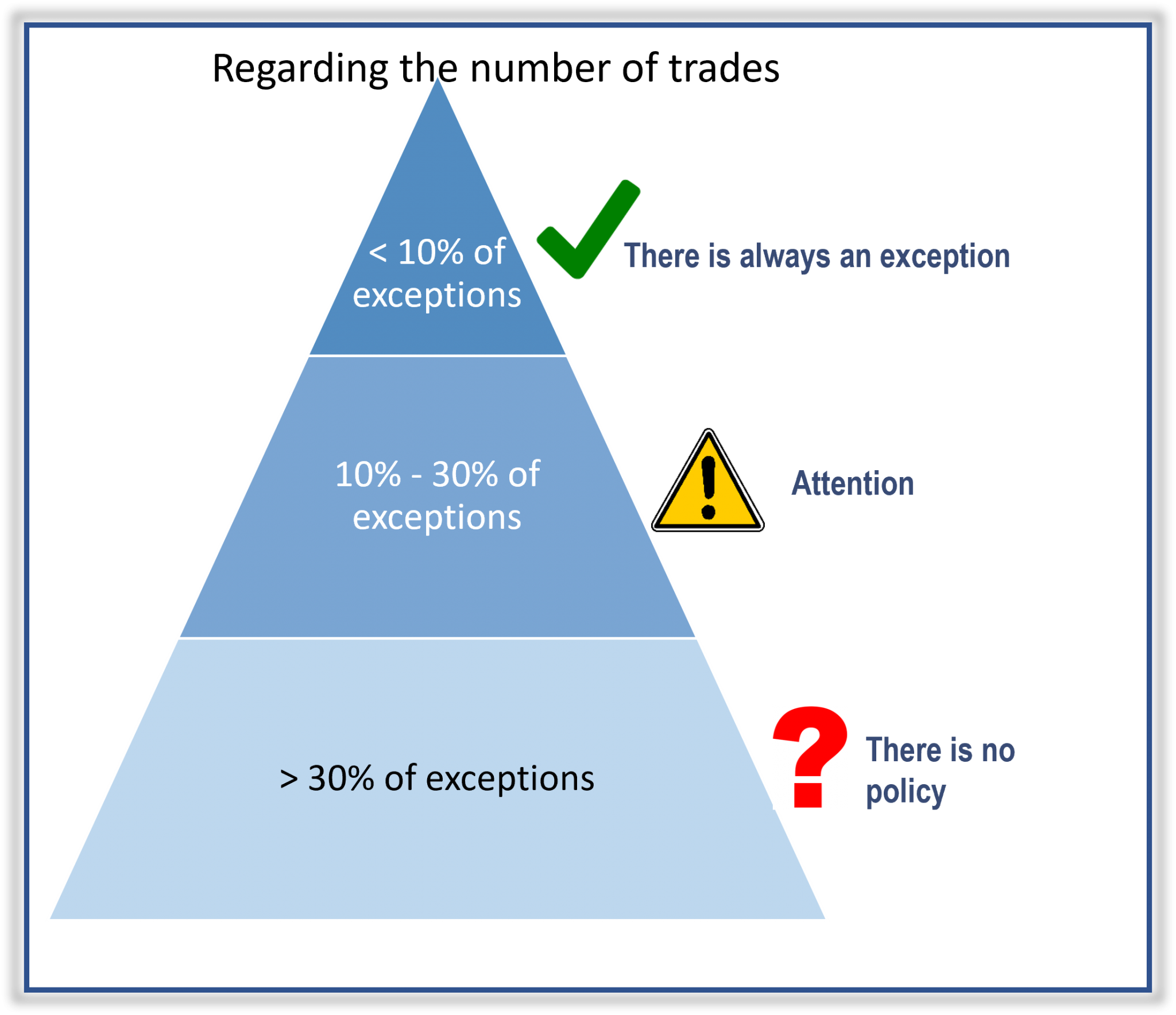
How to design a Commercial Policy?
10 steps to creating a Commercial Policy
After the person responsible for pricing has been defined, the first step is to have a clear understanding of your company’s strategy, which may be by channel, region, groups or product families, etc.
Once the strategy is defined, it is important to listen to those directly impacted by the prices. This way, it will be possible to map out each person’s vision, and they will be involved in the policy design process and feel like part of the work. Areas such as sales, marketing, and finance should be listened to. In addition to these, other areas that are directly impacted by the business should also be heard.
Listening to what customers have to say is also a good practice and can bring valuable insights. Ideally, a small sample of customers from different profiles (partner customers, opportunistic customers, highly critical customers, etc.) should be selected.
After this qualitative survey, it is important to have a quantitative analysis of sales history to have more numerical grounding with facts and data.
Next, the challenge is to define the behaviors your company wants and that make sense for the business, such as volume, buying a mix with more value-added products, buying on a monthly basis, etc. Based on this definition, incentives will be designed, which are the rules for customers to obtain discounts. This definition may seem simple, but there are numerous possibilities and variations. Choosing the most appropriate form for your company may take hours and hours of meetings.
The next step, perhaps the most important point of a Commercial Policy, is to train the team in a new way of working. It will probably be a huge paradigm shift, and the support of senior leadership is essential at this moment of change.
______________________________________________________________
The support of senior leadership is essential at this moment of change.
______________________________________________________________
Finally, testing the solution internally with salespeople and a few customers in the market will allow for fine-tuning of the solution, reducing noise during implementation. Once tested, making the necessary systemic adjustments and controlling – through management reports – the sales team’s performance and how the new Commercial Policy is performing.
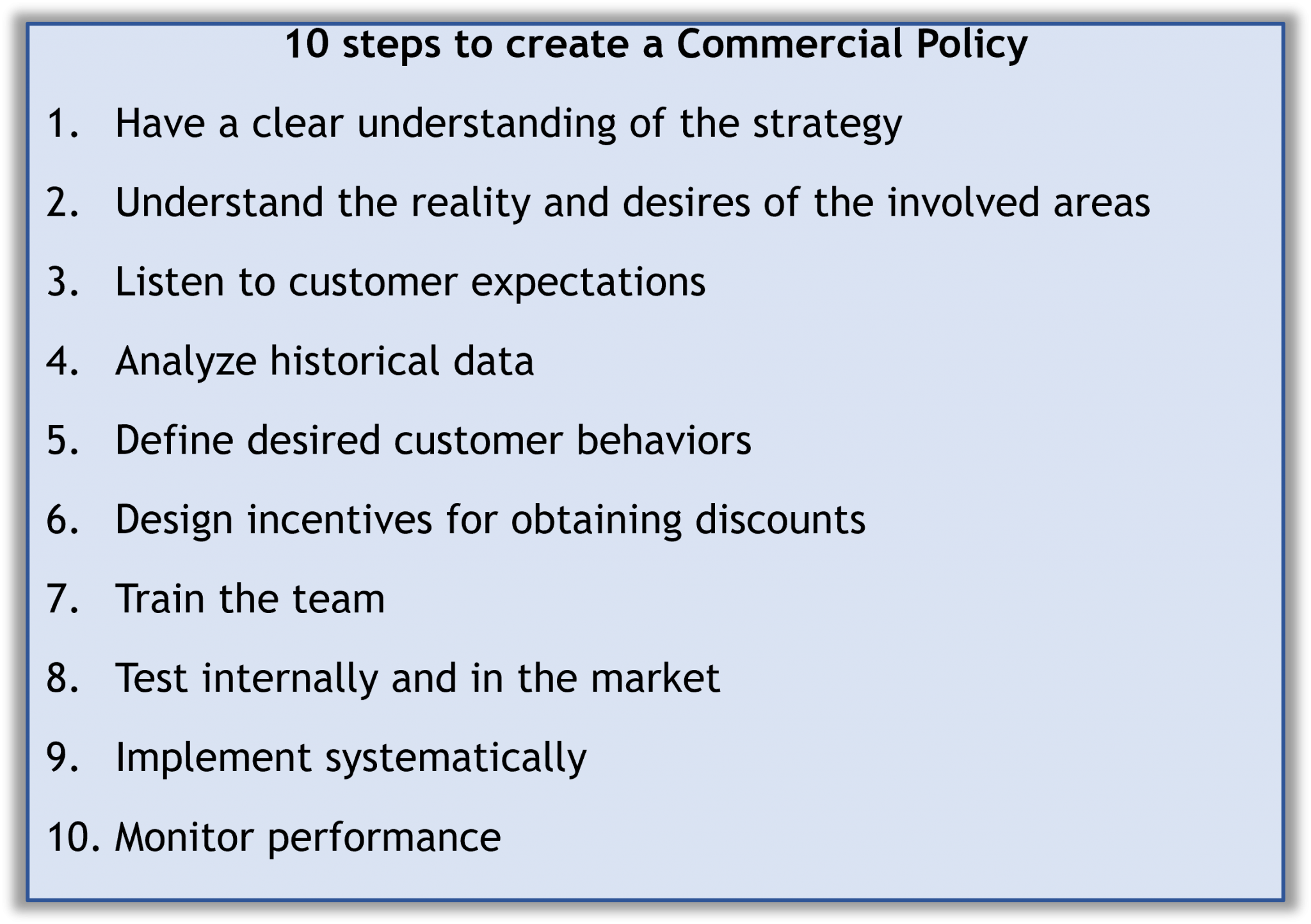
Other necessary activities
A key issue for greater success in a Commercial Policy is understanding that customers, like consumers, are different from each other and often play distinct roles in the sales chain. Therefore, it is essential that your company has good customer segmentation, clearly defining the characteristics of each segment for proper customer allocation. With segmentation, it is possible to define specific discounts (or price positions) for each customer segment, as well as define incentives that make sense for each one.
Another key point that will serve as a great facilitator for the implementation of a new commercial policy is a review of the Variable Remuneration metric. If the sales force continues to be remunerated based solely on revenue, it will not be incentivized to change negotiation behavior. From the moment they start being financially impacted according to the level of discounts they provide, they will think twice before granting discounts without counterparties.
Tips and recommendations
- Incentives should reflect the company’s strategy;
- Keep the policy simple and easy to understand;
- Credibility is essential for the Commercial Policy to remain strong;
- Patience during the implementation period. Temporary volume lows are expected. Customers often test and bluff to see if the new rules will really stay;
- Frequent monitoring of results and feedback from the sales team is important for any necessary adjustments;
- Creation of a Pricing committee for periodic discussion of related topics. The key areas need to be involved and be part of the decisions;
- Clear and constant communication to the front-line team. They need to be well-prepared to convey the correct message to customers and know how to defend questions and criticisms logically;
Now that you understand the importance, why not start developing a Commercial Policy for your company?
Neglecting pricing strategy can have very harsh consequences in the medium and long term and harm the sustainability of your business.
Pricing work requires focus, discipline, control, support from top leadership, a lot of resilience, and partnership with various areas of the company. It must be built step by step and pragmatically. Decisions aimed at the short term can destroy the credibility and sustainability of a Commercial Policy. It is not a 100-meter sprint, but rather a marathon, where preparation, focus, and consistency are essential.


